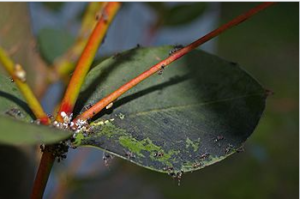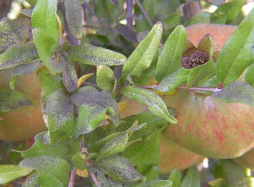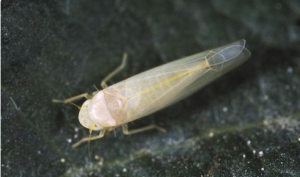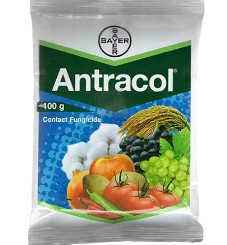Hello everyone, In this article we will know about sooty mold Disease and it’s important factor like introduction, identification, cause of sooty mold, precautions and it’s treatment.
Introduction of Sooty mold disease

Sooty mold is a type of fungal growth that typically appears as a black, sooty coating on plant surfaces, such as leaves, stems, and fruits.
It is not a pathogen itself but rather a secondary issue. The mold grows on the honeydew excreted by sap-sucking insects like aphids, whiteflies, and scales.
While sooty mold does not directly harm the plant, it can reduce photosynthesis by blocking sunlight, potentially weakening the plant over time.
Also Read: A comprehensive guide about Systemic Herbicide for beginner 2024
Identification of Sooty mold disease

- Sooty mold is a type of fungus that typically grows on the honeydew excretions of insects like aphids, whiteflies, or scale insects.
- Sooty mold presents as a black or dark gray coating on plant surfaces, such as leaves, stems, and fruits. It looks like a soot-like or powdery substance.
- It often grows on the upper surfaces of leaves and on plant parts where honeydew has accumulated.
lt self doesn’t directly harm plants, it can reduce photosynthesis by blocking sunlight and may indirectly affect plant health by covering the plant’s surface. - Check for signs of pest infestations like aphids or whiteflies. The presence of these pests often indicates the source of honeydew that feeds the mold.
Read more: Leaf spot: Identification, Cause, Precautions And Treatment
Causes of sooty mold disease

- The main cause is the honeydew secreted by sap-sucking insects such as aphids, whiteflies, mealybugs, and scale insects. This sticky substance accumulates on plant surface.
- Insects such as aphids or whiteflies feed on plant sap, producing honeydew as waste.
Sooty mold spreads as fungal spores are carried by wind or insects to other parts of the plant or nearby plants. - Sooty mold fungi, which include species like Capnodium, Cladosporium, and Alternaria, thrive on the honeydew.
- The fungi grow on the honeydew deposits, forming a dark, sooty coating on the plant.
- High humidity and warm temperatures can favor the growth of sooty mold. Although these molds are not particularly dependent on specific environmental conditions, they can proliferate more quickly in favorable conditions.
Precautions of sooty mold disease
Some precautions to take to manage and prevent sooty mold:
- Address the underlying pest problem, as sooty mold thrives on the honeydew they produce. Use insecticidal soaps, neem oil, or other appropriate pest control methods to manage aphids, whiteflies, or scale insects.
- Remove the mold by washing affected plants with a gentle solution of water and soap. Be careful not to damage the plants. Ensure good air circulation around plants to help reduce humidity, which can encourage mold growth. Excessive moisture can exacerbate mold problems, so water plants properly and avoid waterlogging.
- Regularly check plants for early signs of pest infestations or mold, so you can take action before the problem becomes severe.
- If plants are heavily infected and cannot be treated, consider removing and disposing of them to prevent the spread of mold to other plants.
Treatment of sooty mold disease

- Sooty mold is a fungal growth that appears as a black, sooty coating on plant surfaces, often as a result of honeydew excreted by insects like aphids or whiteflies.
- Address the underlying issue by managing the insect pests that are producing honeydew. Use insecticidal soaps, neem oil, or other appropriate treatments based on the type of pest. Remove the sooty mold by gently washing the affected plant parts with a mixture of water and mild soap. For larger plants, a garden hose with a strong spray can be used.
- Ensure good air circulation around your plants to help prevent mold growth.
Regularly inspect your plants for pests and signs of sooty mold. Keeping plants healthy and well-maintained can reduce the likelihood of recurrence.
Conclusion sooty mold disease
In conclusion, sooty mold is a fungal issue often caused by the presence of sap-sucking insects. Effective treatment involves managing the underlying pest problem, cleaning affected plant surfaces, improving air circulation, and maintaining regular monitoring to prevent recurrence.
Addressing the root cause and maintaining plant health are key to controlling and preventing sooty mold.
1. What is sooty mold disease caused by?
Sooty mold is caused by certain types of fungi that grow on the sticky, sugary secretions excreted by insects like aphids, whiteflies, and scale insects. These fungi thrive on the honeydew produced by these pests, resulting in a black, sooty appearance on plant surfaces. The mold itself doesn’t harm the plant directly, but it can block sunlight and reduce photosynthesis, potentially weakening the plant over time.
2. How do you treat sooty mold disease?
Address the insects causing the honeydew (e.g., aphids). Wash the moldy surfaces with soapy water and a soft brush. Enhance circulation around plants to help them dry quickly.
3. What is the best spray for sooty mold disease?
The best spray for sooty mold is a solution of 1 to 2 tablespoons of mild dish soap in 1 liter of water. For severe cases, neem oil or horticultural oil can also be effective.
4. What is the best fungicides for sooty blotch?
The best fungicides for sooty blotch are:
Capton:-Broad-spectrum and effective against many fungal diseases.
Chlorothalonil:- Provides good control of sooty blotch and other fungal issues.
5. Does neem oil treat sooty mold disease?
Yes, neem oil can help treat sooty mold. It works by controlling the pests that produce the honeydew on which the mold grows. Additionally, neem oil has some antifungal properties, which can aid in reducing mold growth. However, it’s most effective when combined with pest management practices.
6. What systemic insecticide is used for sooty mold?
A systemic insecticide commonly used to control pests that cause sooty mold is imidacloprid. It targets insects like aphids and scale that produce honeydew, thereby reducing sooty mold. Always follow the manufacturer’s guidelines for proper application.
